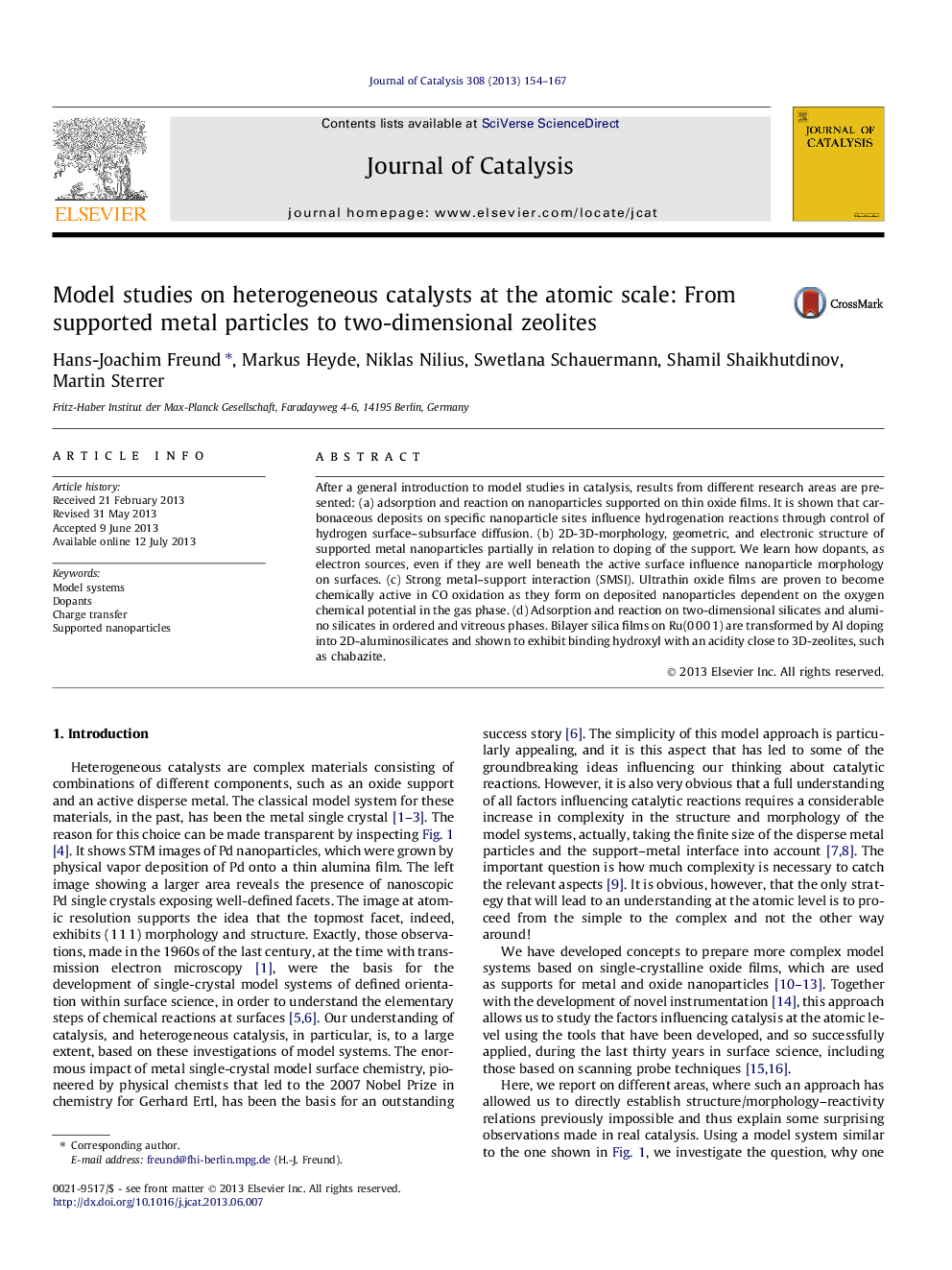| Article ID | Journal | Published Year | Pages | File Type |
|---|---|---|---|---|
| 61194 | Journal of Catalysis | 2013 | 14 Pages |
•Adsorption and reaction on nanoparticles supported on thin oxide films.•Structure of supported metal nanoparticles in relation to doping of the support.•Strong metal–support interaction (SMSI).•Ordered and vitreous two-dimensional silicates and aluminosilicates in phases.
After a general introduction to model studies in catalysis, results from different research areas are presented: (a) adsorption and reaction on nanoparticles supported on thin oxide films. It is shown that carbonaceous deposits on specific nanoparticle sites influence hydrogenation reactions through control of hydrogen surface–subsurface diffusion. (b) 2D-3D-morphology, geometric, and electronic structure of supported metal nanoparticles partially in relation to doping of the support. We learn how dopants, as electron sources, even if they are well beneath the active surface influence nanoparticle morphology on surfaces. (c) Strong metal–support interaction (SMSI). Ultrathin oxide films are proven to become chemically active in CO oxidation as they form on deposited nanoparticles dependent on the oxygen chemical potential in the gas phase. (d) Adsorption and reaction on two-dimensional silicates and alumino silicates in ordered and vitreous phases. Bilayer silica films on Ru(0 0 0 1) are transformed by Al doping into 2D-aluminosilicates and shown to exhibit binding hydroxyl with an acidity close to 3D-zeolites, such as chabazite.
Graphical abstractStudies on model systems for heterogeneous catalysts using surface science techniques provide deep and unexpected insight into structures and mechanisms to provide a basis to understand how real catalysts work.Figure optionsDownload full-size imageDownload high-quality image (139 K)Download as PowerPoint slide
